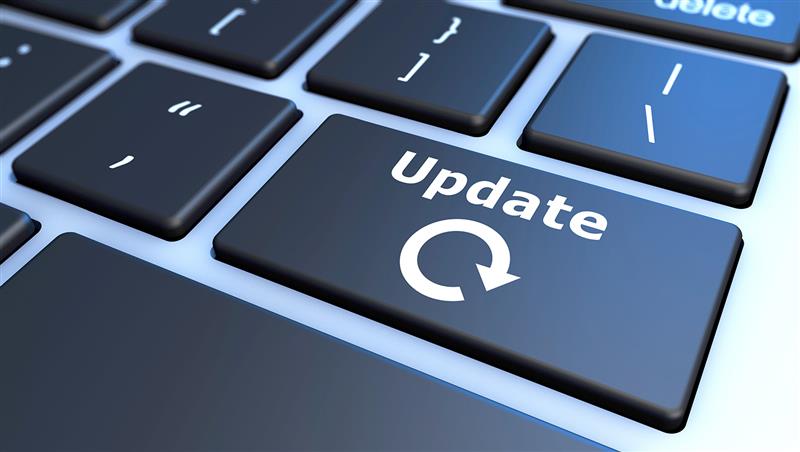Most SMBs have a Q4 plan. But what they don’t have is a clear picture of how their IT risks, from outdated systems to missed insurance requirements, could derail it all without an IT readiness strategy.
Windows 10 end-of-life, stricter cyber insurance audits, and patchwork remote access setups are exposing hidden liabilities across small businesses.
This guide isn’t just another checklist—it’s a mid-year readiness audit that helps you spot what most SMBs miss… before it costs you in Q4.
With Windows 10 support ending October 14 and cyber insurance requirements getting stricter every month, it is time to take an honest look at where your business stands. This isn’t about creating panic; it’s about giving you a roadmap that can guide you through the rest of 2025 with confidence.
For businesses in Willow Grove, PA, having a clear IT readiness strategy can make all the difference between thriving through Q4 and scrambling to put out fires when it’s too late to plan properly.
What Are Today’s Cyber Insurance Requirements?
Most cyber insurance policies now require MFA, EDR, monthly patching, and employee training. Failure to meet these standards can result in denied claims. These are the minimum benchmarks insurers expect to see in place and documented.
Remember when cyber insurance was simple? Sadly, those days are long gone. Today’s policies read a lot like IT security manuals, and for good reason: claims have skyrocketed in recent years, and insurers are understandably protecting themselves by demanding better security practices.
Here’s what most policies are now requiring:
Multi-Factor Authentication (MFA) Everywhere
- All of your email systems (Office 365, Google Workspace)
- Remote access tools and VPNs
- Administrative accounts for all systems
- Cloud applications and file storage
Endpoint Detection and Response (EDR)
- Real-time monitoring on all devices
- Automated threat detection and response
- Regular security assessments and reporting
- Evidence of active threat hunting
Patch Management Protocols
- Monthly security updates applied within 30 days
- Documentation supporting your patching schedules and compliance
- Emergency patching procedures for critical vulnerabilities
- Regular vulnerability assessments
Employee Security Training
- Yearly cybersecurity awareness training
- Phishing simulation testing
- Incident response training for key members of your staff
- Documentation proving completed training
What Happens If You Don’t Measure Up?
Here’s the harsh reality: if you suffer a cyberattack and can’t prove that your business has been following these requirements, your claim could well be denied. We’ve seen businesses lose six-figure claims because they were simply unable to document their MFA implementation or show evidence they carry out regular security training.
The question isn’t really whether you can afford to implement these measures; it’s whether you can afford not to.
How Does Outdated Hardware or OS Hurt My Business?
Windows 10 support ends October 14, 2025. But that’s not just another date on your busy calendar; it’s a hard deadline that will affect your security, compliance, and insurance coverage moving forward.
Unlike previous Windows transitions, this one comes with a few extra complications:
Supply Chain Constraints
Hardware availability is still inconsistent thanks to the ongoing supply chain issues affecting the world. Waiting until September to order new computers could leave you scrambling for alternatives or getting hit with premium prices.
Insurance Policy Changes
Many cyber insurance policies will exclude coverage for businesses that run unsupported operating systems after their EOL date. This isn’t theoretical, by the way; it’s already happening to Windows 7 holdouts.
Compliance Violations
Regulations like HIPAA, PCI DSS, and state privacy laws require businesses to follow “reasonable security measures.” Running an unsupported OS doesn’t quite meet this definition.
How Do You Know What Needs Attention?
Ask yourself these questions:
- How old are your computers? (As a general guide, anything over 4 years may not run Windows 11 properly)
- Do you have an inventory of your hardware with purchase dates and warranty information?
- Which business-critical applications could run into compatibility issues with newer systems?
- What’s your budget for hardware replacement versus upgrade costs?
Are Your Remote Access and Endpoints Properly Protected?
The shift to hybrid work has brought with it a lot of conveniences for businesses and employees alike, but it has also led to new security challenges that many SMBs are still figuring out. Your office network might be locked down tight, but what about that employee who is working from the coffee shop down the street?
Common Remote Access Vulnerabilities:
- Employees using their personal devices for work without implementing appropriate security controls
- Home networks that use default router passwords and no firewalls
- Unsecured Wi-Fi connections in public spaces
- Not using a VPN for accessing company resources
Endpoint Coverage Blind Spots:
- Mobile devices that can access company emails but aren’t managed
- Contractor and temporary worker devices that do not follow your security policies
- Personal laptops used for work that lack endpoint protection
- IoT devices (smart TVs, printers, cameras) that connect to your network
How Can You Close These Gaps?
For businesses in Willow Grove, implementing comprehensive endpoint protection means thinking beyond just the computers your company owns:
- Device Management Policies: You need to establish and communicate clear rules about what devices can access company data and how they must be secured.
- Zero Trust Network Access: Be sure to verify every device and user before granting access to resources.
- Mobile Device Management (MDM): Control and monitor every device that touches company data.
- Regular Security Audits: Carry out monthly checks to identify new devices and potential vulnerabilities.
Can My Business Pass a Backup & Recovery Audit?
A disaster doesn’t wait until you’re ready. And most SMBs don’t find out their backups don’t work… until they have to.
Here’s how to make sure your IT readiness strategy won’t fail you when it matters most:
Backup Coverage Questions:
- What data is being backed up, and how often?
- Where are your backups stored, and are they encrypted properly?
- How quickly can you restore critical systems after an incident?
- When did you last test your backup restoration process?
Recovery Time Questions:
- What’s your Recovery Time Objective (RTO) for critical systems?
- What’s your Recovery Point Objective (RPO) for data loss tolerance?
- Do you have documented procedures for various disaster scenarios?
- Who is responsible for performing recovery procedures, and are they trained?
The 3-2-1 Rule Isn’t Enough Anymore
The old 3-2-1 backup rule (3 copies, 2 different media types, 1 offsite) was sound advice when ransomware was rare. However, today’s attacks specifically target backups, so you will need an updated approach.
The Modern Backup Strategy:
- Air-gapped backups that are completely disconnected from your business’s network
- Immutable storage that can’t be altered or deleted by ransomware
- Regular restoration testing to make sure your backups actually work when they’re needed
- Incident response procedures that include steps for backup verification
Want to know how you really stack up? Take advantage of our Cybersecurity Readiness Assessment to uncover blind spots in your insurance compliance, patching, and endpoint protection strategy.
What IT Planning Mistakes Do Most SMBs Make?
As a small business owner, you wear many hats, and detailed IT planning often gets pushed to the bottom of the priority list. That’s understandable, but when you’re always in reactive mode, you could be leaving some serious gaps.
The Planning Gaps That Hurt Most:
- Lack of a hardware replacement schedule (leading to unexpected failures)
- Insufficient budgeting for security improvements
- Lack of vendor management and contract reviews
- Missing documentation for critical systems and processes
- No succession planning for IT knowledge and responsibilities
How Can You Build a Proactive IT Readiness Strategy?
Here are some steps you can take to be more proactive.
Quarterly IT Reviews
Schedule regular assessments of your technology needs, security posture, and upcoming requirements instead of waiting for something to break.
Budget Planning
Technology expenses should be planned, not surprises. It can be helpful to set aside 3 to 5% of your annual revenue for IT improvements and security measures.
Vendor Relationships
Build relationships with trusted IT partners before you need them. Emergency support always costs more than planned partnerships.
Documentation
Keep records of your systems, passwords, procedures, and vendor contacts. Your future self (and your team) will thank you!
For businesses in Willow Grove, having a proactive IT strategy allows you to focus on growing your business instead of constantly trying to solve problems.
Mid-Year IT Readiness Strategy Checklist for SMBs
Use this worksheet to assess where your business stands:
Cyber Insurance Compliance
- Multi-factor authentication implemented on all systems
- Endpoint detection and response solutions deployed
- Monthly patching schedule documented and followed
- Yearly security training completed for all employees
- Security incident response plan documented and tested
Operating System and Hardware
- Hardware inventory completed, including age and warranty information
- Windows 10 upgrade plan developed and scheduled
- Application compatibility testing carried out
- Hardware budget approved for necessary replacements
- Timeline established for completing migration before October 14
Remote Access and Endpoints
- VPN access requirement in place for all remote work
- Personal device policies established and enforced
- Mobile device management solution implemented
- Network security audit completed within the last 6 months
- IoT device inventory and security assessment completed
Backup and Recovery
- 3-2-1-1 backup strategy implemented (including air-gapped storage)
- Backup restoration testing performed each month
- Recovery time and recovery point objectives documented
- Disaster recovery procedures documented and tested
- Staff trained in procedures for backup and recovery
IT Readiness Strategy and Planning
- Annual IT budget is mapped out and approved
- Hardware replacement schedule created
- Vendor relationships documented and contracts are current
- System documentation is current and accessible
- IT responsibilities are assigned and documented
Don’t Wait Until Q4 to Address These Gaps
The businesses that thrive through the rest of 2025 will be the ones who take action now, while there’s still time to plan and implement changes properly. October 14 isn’t just Windows 10’s end-of-life date; you should also think of it as the deadline for having your IT house in order.
For businesses in Willow Grove, the decision is clear: you can either address these readiness gaps now with proper planning, or deal with emergencies later when options are limited and costs are higher.
If this is a priority to your operations, this is at the core of what our MSP does. Does it make sense to carve out 15 minutes for a deeper conversation? Contact us now!
Does this checklist feel overwhelming? The reality is that most small business owners don’t have the time or expertise to tackle all these areas simultaneously. That’s exactly why we offer Priority Discovery Calls to help you single out which areas need immediate attention and set up a realistic timeline for addressing everything else.
Are you ready to turn this checklist into an action plan? Book your Priority Discovery Call today.
Want a deeper dive into your current setup? Download our Internal System Audit to get a clear view of where your business stands.


